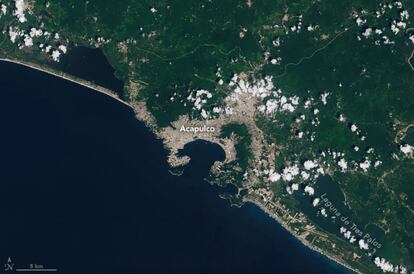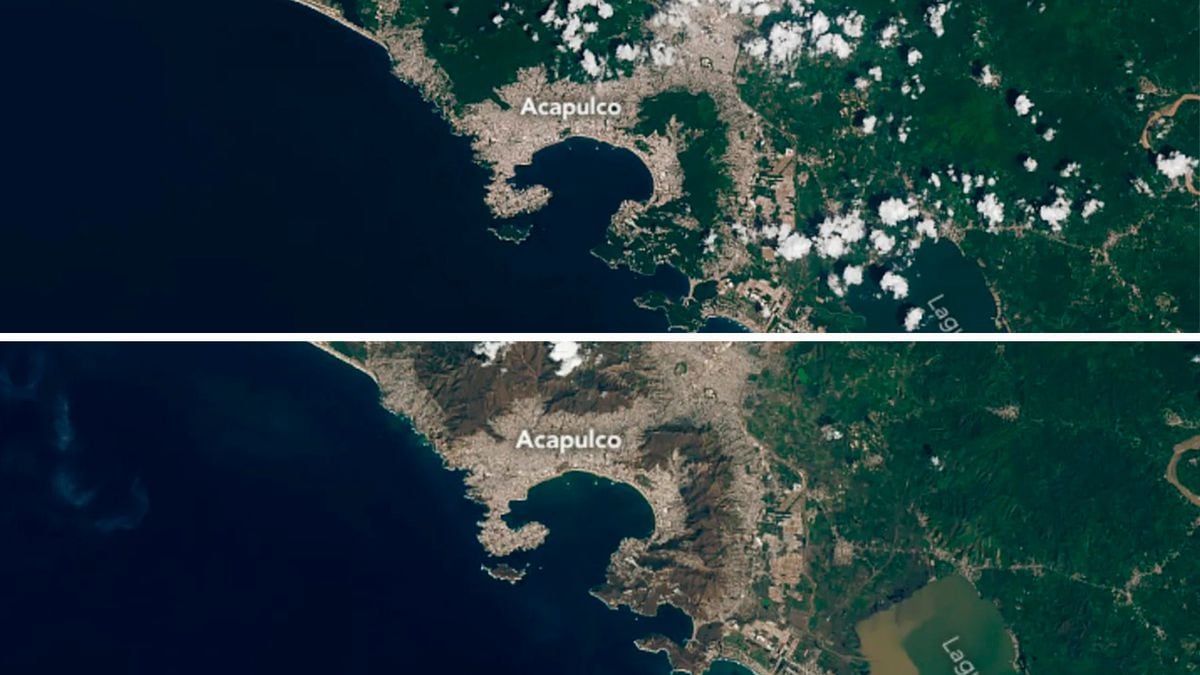It looked like it would be a tropical storm, but within half a day it had turned into a powerful hurricane hitting the Pacific coast of Mexico. According to Otis It destroyed much of the infrastructure and landscape of the city of Acapulco in Guerrero province, and two weeks later the hurricane’s footprint is still being measured in the area. This Tuesday, NASA released several satellite images taken before and after the disaster on September 21 and October 31, which provide new information about its effects.

“The landscape near the city is changing, and vegetation that was previously green and lush looks brown,” the organization explains in a note attached to the illustrations. “Almost a week after the storm, sediment runoff from excess rain can still be seen in Tres Palos Lagoon.” The images were taken by two sensors of the Operational Land Imager (OLI) on the Landsat 8 and 9 satellites. “Damage to vegetation in the mountains outside Acapulco is particularly striking in these images,” the report continues: “Trees at higher elevations and on steeper slopes suffer more damage during storms because they are more exposed to high wind speeds. In this case, the hurricane struck at 250 kilometers per hour. Casualties The official count is 47 people and 53 missing.
Jess Zimmerman, a professor of ecology at the University of Puerto Rico, reviewed images of the system and concluded that the damage caused by the hurricane’s passage was “unquestionable.” In previous research, he had already examined how other storms, such as Hurricane Maria in 2017, had caused damage in Puerto Rico.
NASA has activated the Disaster Area of the Applied Earth Sciences Program to support people affected by Hurricane Otis, and will release new maps and data as new information becomes available.
Subscribe here Get all the important information about current events in this country with the EL PAÍS México newsletter


:quality(85)/cloudfront-us-east-1.images.arcpublishing.com/infobae/BH6NLAQGXJGADFWTENBUV7Z7RQ.jpg)
:quality(85)/cloudfront-us-east-1.images.arcpublishing.com/infobae/3GK63ATFOMFAYNUAQKUL4WUJFM.jpg)

:quality(85)/cloudfront-us-east-1.images.arcpublishing.com/infobae/SJ35ZLSJ5NB4BWVRJPSK74P7AQ.jpg)